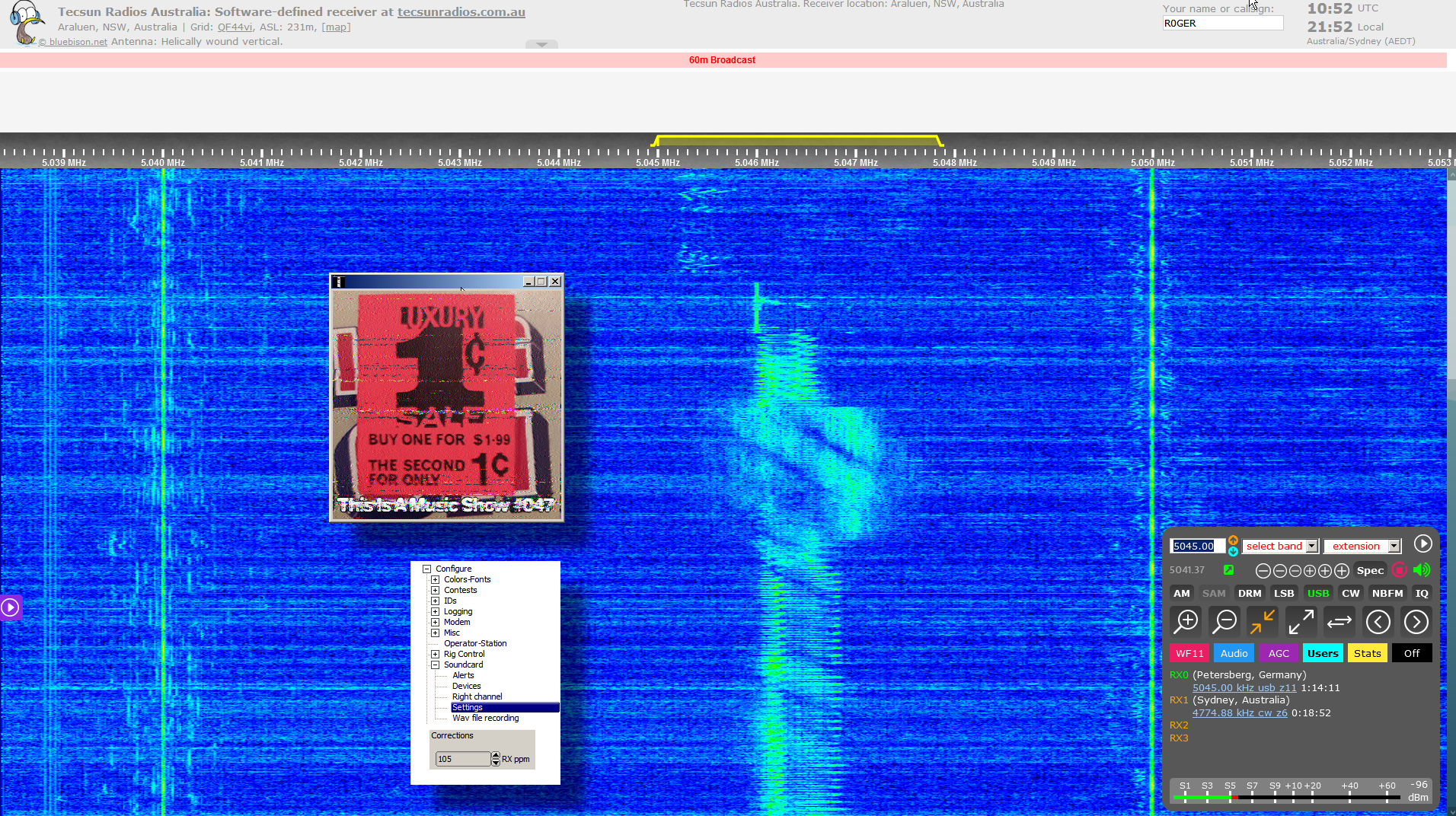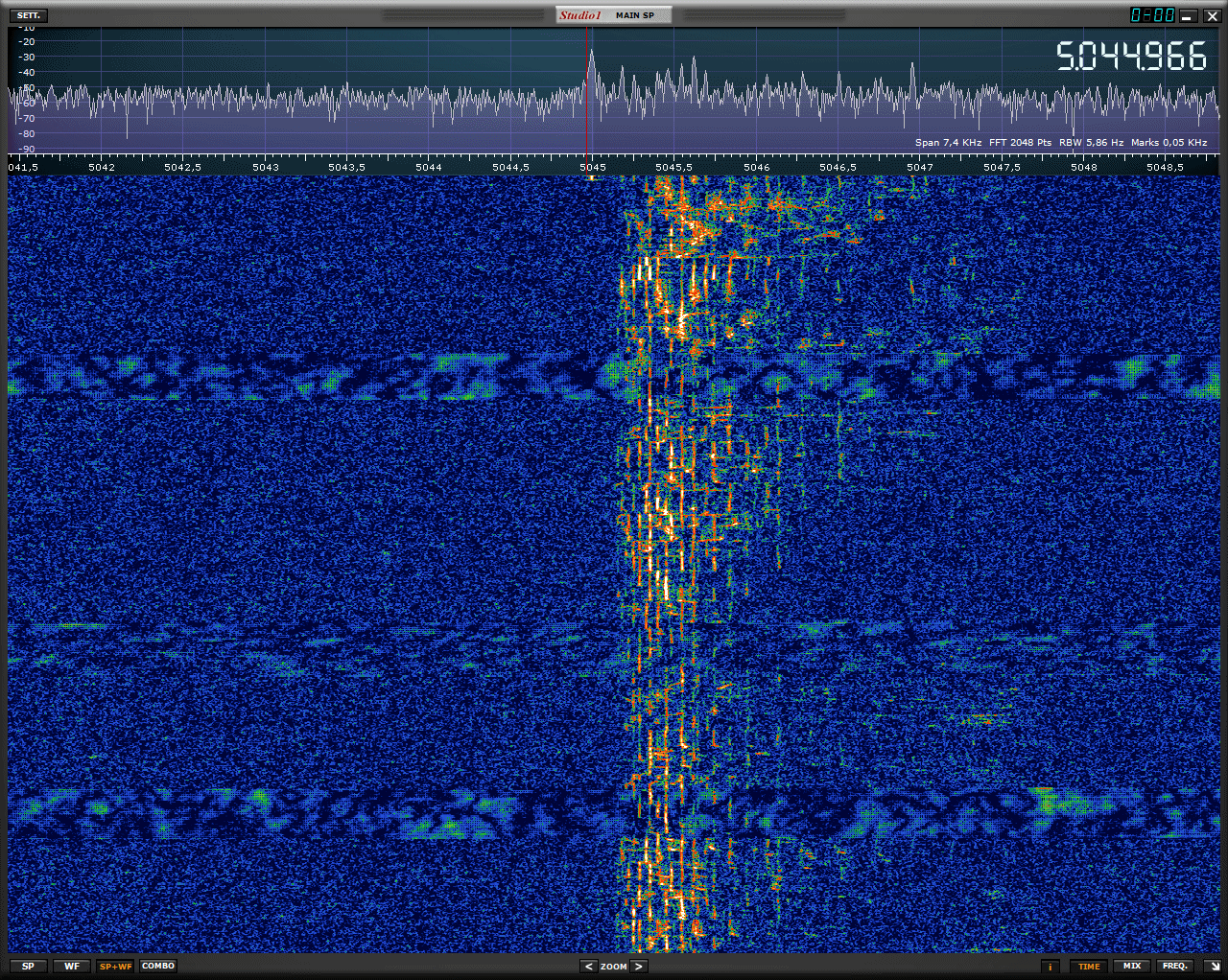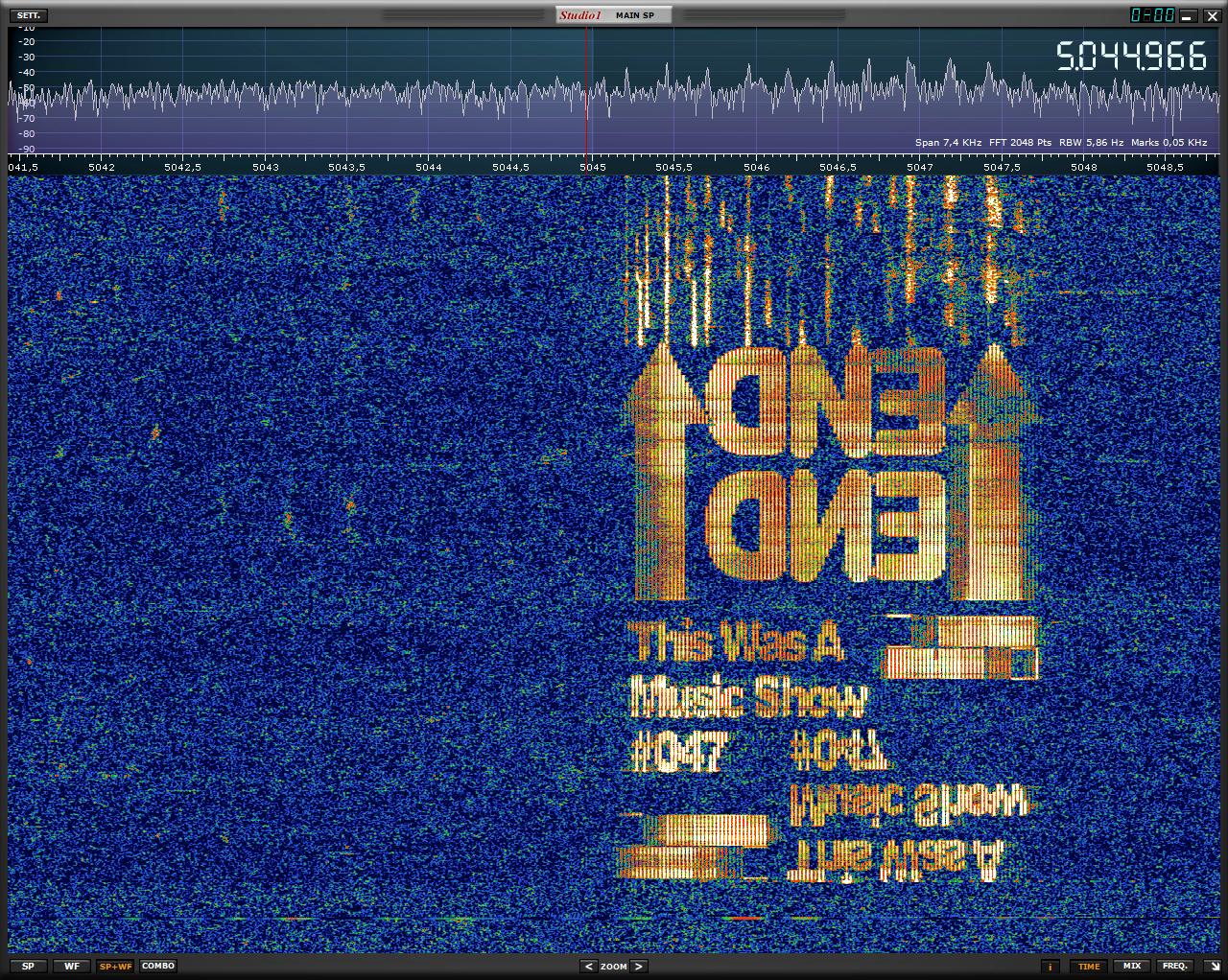http://www.rhci-online.net/radiogram/radiogram.htm

RSID: <<2020-01-19T01:30Z
MFSK-64
@ 5960000+1500>>
Janis Joplin was born January 19, 1943.
She died in 1970.
Sending Pic:201x229;

janisjoplin.com
Please report decode to
themightykbc@gmail.com
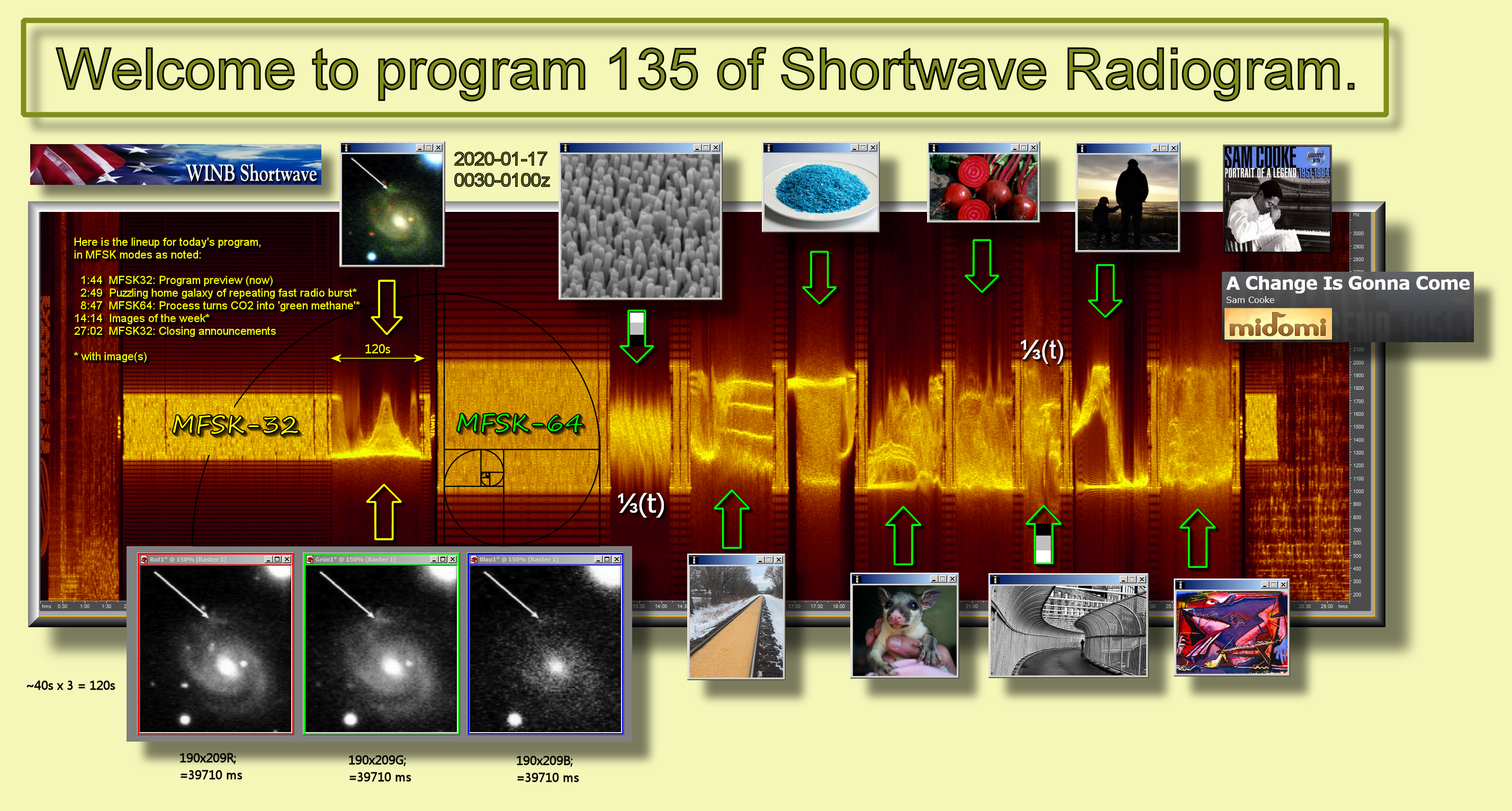

RSID: <<2020-01-17T00:31Z
MFSK-32 @
9265000+1500>>
Welcome to program 135 of Shortwave Radiogram.
I'm Kim Andrew Elliott in Arlington, Virginia USA.
Here is the lineup for today's program, in MFSK modes as noted:
1:44 MFSK32: Program preview (now)
2:49 Puzzling home galaxy of repeating fast radio burst*
8:47 MFSK64: Process turns CO2 into 'green methane'*
14:14 Images of the week*
27:02 MFSK32: Closing announcements
* with image(s)
Please send reception reports to
radiogram@verizon.net
And visit http://swradiogram.net
Twitter:
@SWRadiogram
From Science News:
The home galaxy of a second repeating fast radio burst is a
puzzle
Maria Temming
6 January 2020
Brief, brilliant flashes of radio waves have been traced back to
a galaxy that looks like the Milky Way - a radically different
environment from where astronomers have seen similar radio flares
before.
Until now, the only source known for a recurrent fast radio burst
like this was a tiny, star-forming dwarf galaxy, while
nonrepeating bursts have been tracked back to more massive,
mellow galaxies. That implied that the two varieties of fast
radio bursts, or FRBs, might have different sources.
But astronomers have pinned a second repeating FRB to an entirely
different kind of host galaxy: a star-forming spiral, similar in
size to our own galaxy, about 500 million light-years away. That
observation, reported online January 6 in Nature, suggests that a
whole menagerie of galactic environments may generate FRBs.
"There needs to be a theory that can explain this diversity of
environments, or ... there are multiple different sources for
fast radio bursts," says Jason Hessels, an astrophysicist at the
University of Amsterdam.
To identify the home of this second repeating FRB, originally
spotted by the Canadian Hydrogen Intensity Mapping Experiment in
British Columbia, Hessels' team aimed eight radio telescopes in
the European VLBI Network at this burst in June 2019. Combining
the telescopes' observations allowed the researchers to
triangulate the FRB's exact position in the sky. They then used
the Gemini North telescope in Hawaii to image its spiral galaxy
host.
The nature of this galaxy implies that the FRB may have a
different engine than the repeater in the dwarf galaxy, thought
to have the conditions necessary to forge highly magnetized
neutron stars that could power repeated bursts. But in the case
of the spiral, "there's no reason why this type of galaxy should
produce any particularly exotic type of neutron star," Hessels
says. Instead, he imagines that a black hole gobbling up material
could account for the blinking FRB.
https://www.sciencenews.org/article/home-galaxy-second-repeating-fast-radio-burst-is-puzzle
Image: The most recent observed repeating fast radio burst (arrow
points to its location), is from a massive spiral similar to the
Milky Way ...
Sending Pic:190x209C;
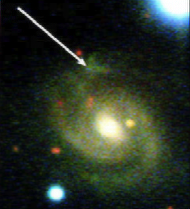
Shortwave Radiogram now changes to MFSK64 ...
RSID: <<2020-01-17T00:38Z
MFSK-64 @
9265000+1500>>
This is Shortwave Radiogram in MFSK64
Please send your reception report to
radiogram@verizon.net
From Futurity.org:
Fake photosynthesis turns CO2 into 'green methane'
Posted by Nicole Casal Moore
13 January 2020
A new artificial photosynthesis approach uses sunlight to turn
carbon dioxide into methane, which could help make
natural-gas-powered devices carbon neutral.
Methane is the main component of natural gas. Photosynthesis is
the process through which green plants use sunlight to make food
for themselves out of carbon dioxide and water, releasing oxygen
as a byproduct. Artificial photosynthesis often aims to produce
hydrocarbon fuels, similar to natural gas or gasoline, from the
same starting materials.
A new catalyst makes the methane-generating method possible. The
solar-powered catalyst is made from abundant materials and works
in a configuration that could be mass produced. The researchers
think that it could be recycling smokestack carbon dioxide into
clean-burning fuel within 5-10 years.
"Thirty percent of the energy in the US comes from natural gas,"
says Zetian Mi, professor of electrical engineering and computer
science at the University of Michigan, who led the work with Jun
Song, professor of materials engineering at McGill University.
"If we can generate green methane, it's a big deal."
Better artificial photosynthesis
The chief advance is that the team has harnessed relatively large
electrical currents with a device that should be possible to mass
produce. It's also especially good at channeling that electricity
toward forming methane, with half of the available electrons
going toward methane-producing reactions rather than toward
byproducts like hydrogen or carbon monoxide.
"Previous artificial photosynthesis devices often operate at a
small fraction of the maximum current density of a silicon
device, whereas here we operate at 80 or 90% of the theoretical
maximum using industry-ready materials and Earth abundant
catalysts," says Baowen Zhou, a postdoctoral researcher in Mi's
group working on the project.
Turning carbon dioxide into methane is a very difficult process.
The carbon must be harvested from CO2, which requires a lot of
energy because carbon dioxide is one of the most stable
molecules. Likewise, H2O must be broken down to attach the
hydrogen to the carbon. Each carbon needs four hydrogen atoms to
become methane, making for a complicated eight-electron dance
(each carbon-hydrogen bond has two electrons in it, and there are
four bonds).
The design of the catalyst is critical to the success of the
reaction.
"The one million dollar question is how to quickly navigate
through the enormous materials space to identify the optimal
recipe," Song says.
His team's theoretical and computational work identified the key
catalyst component: nanoparticles of copper and iron. The copper
and iron hold onto molecules by their carbon and oxygen atoms,
buying time for hydrogen to make the leap from the water molecule
fragments onto the carbon atom.
A solar panel for transforming carbon dioxide
The device is a sort of solar panel studded with nanoparticles of
copper and iron. It can use the sun's energy or an electrical
current to break down the carbon dioxide and water.
The base layer is a silicon wafer, not unlike those already in
solar panels. That wafer is topped with nanowires, each 300
nanometers (0.0003 millimeters) tall and about 30 nanometers
wide, made of the semiconductor gallium nitride.
The arrangement creates a large surface area over which the
reactions can occur. A thin film of water covers the
nanoparticle-flecked nanowires.
The researchers can design the device to run under solar power
alone, or amp up the methane production can be with a supplement
of electricity. Alternatively, running on electricity, the device
could potentially operate in the dark.
In practice, the artificial photosynthesis panel would need to be
connected to a source of concentrated carbon dioxide-for example,
carbon dioxide captured from industrial smokestacks. The device
may also be configured to produce synthetic natural gas (syngas)
or formic acid, a common preservative in animal feed.
Additional researchers from the University of Michigan, McGill
University, and McMaster University contributed to the work.
The findings appear in the Proceedings of the National Academy of
Sciences.
Funding for the research came from Emissions Reduction Alberta
and the Natural Sciences, the Engineering Research Council of
Canada, and the Blue Sky Program at the University of Michigan
College of Engineering. The university holds multiple patents on
the catalyst.
Source: University of Michigan
https://www.futurity.org/artificial-photosynthesis-carbon-dioxide-green-methane-2255502/
Image: An electron microscope image shows the semiconductor
nanowires that deliver electrons to metal nanoparticles, which
turn carbon dioxide and water into methane ...
Sending Pic:300x271;
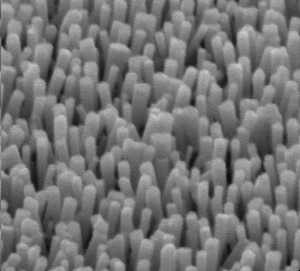
This is Shortwave Radiogram in MFSK64
Please send your reception report to
radiogram@verizon.net
This week's images ...
In Crystal, Minnesota, corn that spilled from a grain hopper
extended for 600 metres, worth about $3,465. From
strib.mn/2FR2vQr ...
Sending Pic:176x210C;

Recycled, shredded plastic is pictured on a dinner plate,
equivalent to the amount of microplastic a person could consume
in a year, based on a recent study by WWF International, From
reut.rs/2Nt0IVW ...
Sending Pic:213x143C;
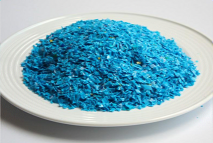
A rescued baby brushtail possum at the Kangaroo Island Wildlife
Park in Australia. From
bit.ly/360E79E ...
Sending Pic:196x171C;

"Rote Bete" or "rote Rübe" -- beets -- are one of the German
"superfoods" included in a Deutsche Welle pictorial. From
bit.ly/2stnLsv ...
Sending Pic:204x125C;

A bridge across the M8 to Finnieston in Glasgow, Scotland. From
bbc.in/2FXk15D ...
Sending Pic:293x169;

A winter walk from Tillymorgan Hill to Benachie, Aberdeenshire,
Scotland. From
bbc.in/2FXk15D ...
Sending Pic:189x180C;

Our painting of the week is by Norman Lewis, an untitled work
known as "Jazz Club." From
bit.ly/36XIsfa ...
Sending Pic:210x156C;
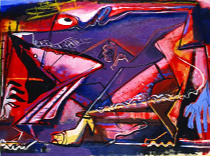
Shortwave Radiogram returns to MFSK32 ...
RSID: <<2020-01-17T00:57Z
MFSK-32 @
9265000+1500>>
This is Shortwave Radiogram in MFSK32 ...
Shortwave Radiogram is transmitted by:
WRMI, Radio Miami International, wrmi.net
and
WINB Shortwave, winb.com
Please send reception reports to
radiogram@verizon.net
And visit http://swradiogram.net
Twitter:
@SWRadiogram or twitter.com/swradiogram
I'm Kim Elliott. Please join us for the next Shortwave
Radiogram.
http://www.rhci-online.net/radiogram/radiogram.htm
http://wiki.radioreference.com/index.php/Decoding_the_SW_Radiogram_Broadcasts
https://www.qsl.net/ve7vv/Files/Digital%20Modes.pdf
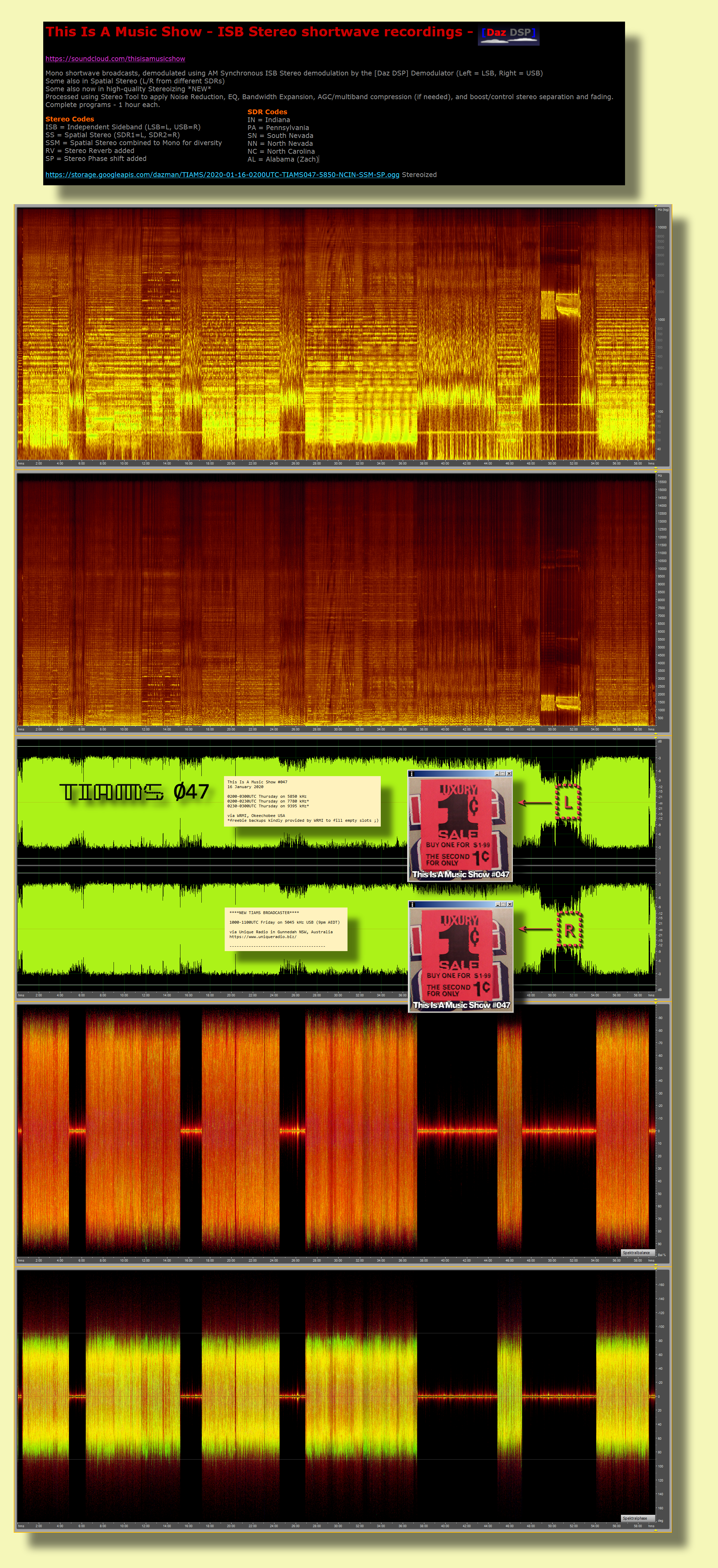
RSID: <<2020-01-16T02:48Z
MFSK-64 @
5850000+1500>>

This Is A Music Show #047
16 January 2020
0200-0300UTC Thursday on 5850 kHz
0200-0230UTC Thursday on 7780 kHz*
0230-0300UTC Thursday on 9395 kHz*
via WRMI, Okeechobee USA
*freebie backups kindly provided by WRMI to fill empty slots ;)
****NEW TIAMS BROADCASTER****
1000-1100UTC Friday on 5045 kHz USB (9pm AEDT)
via Unique Radio in Gunnedah NSW, Australia
https://www.uniqueradio.biz/
----------------------------------------
PLAYLIST
Links of note:
History of 80's-era CFNY 102.1, "Spirit of Radio", comments by Neil Peart:
http://www.spiritofradio.ca/
-----
Please send reception reports/comments:
thisisamusicshow@gmail.com
Follow TIAMS on Twitt
RSID: <<2020-01-16T02:50Z
MFSK-64 @
5850000+1500>>
Sending Pic:300x300Cp4;

